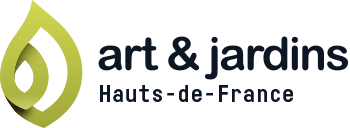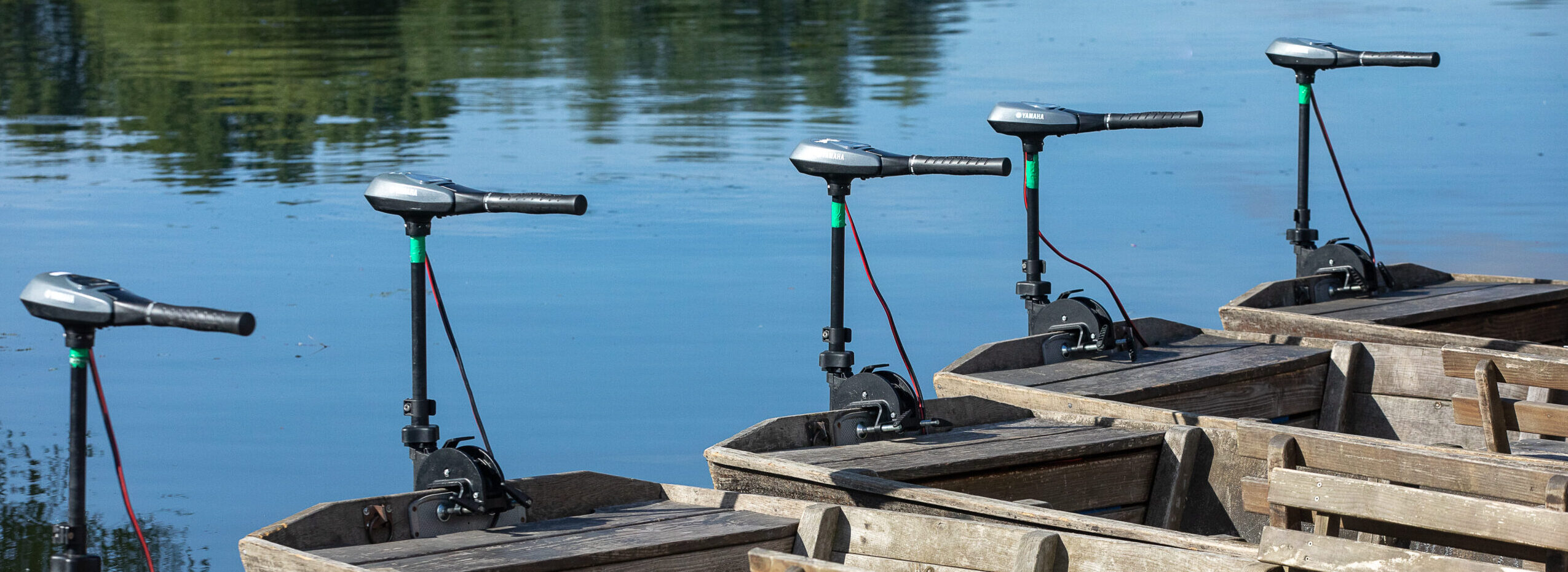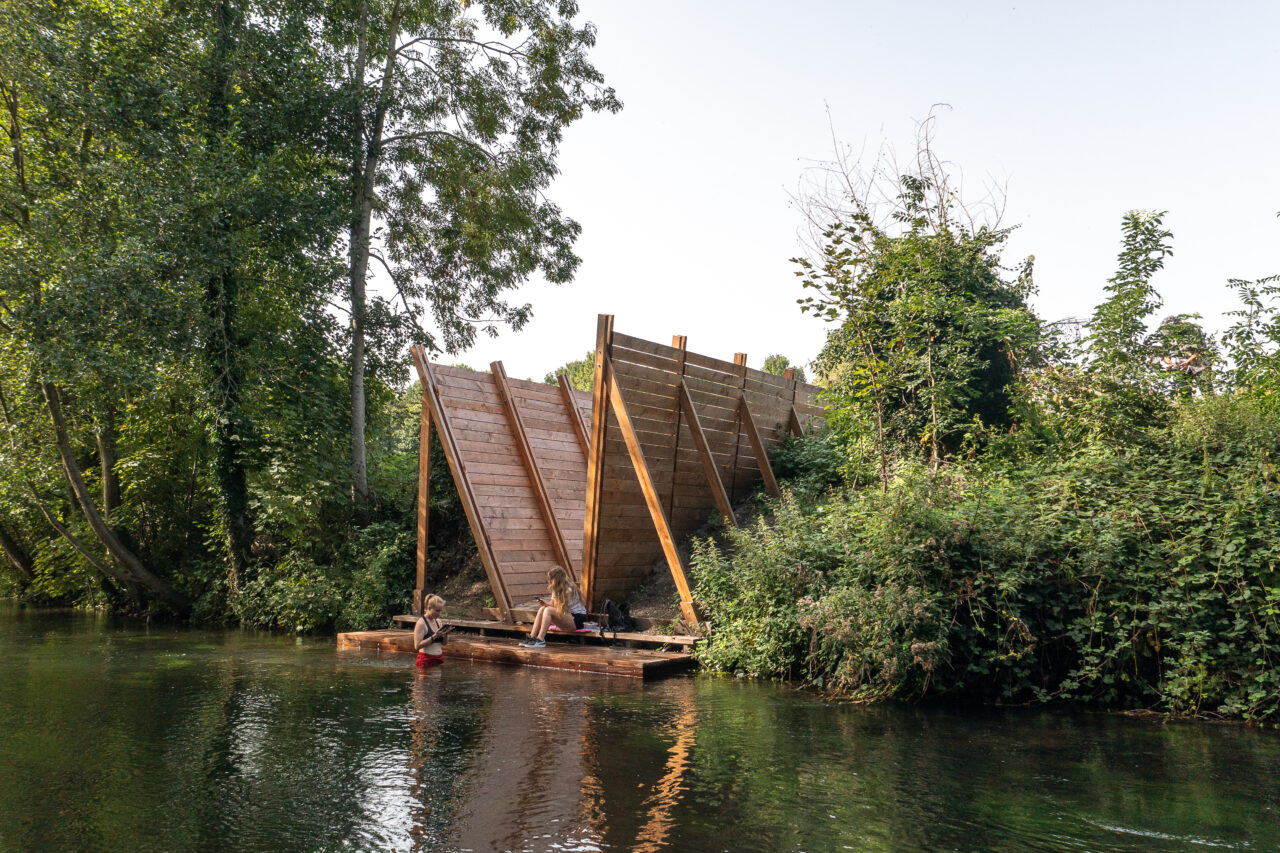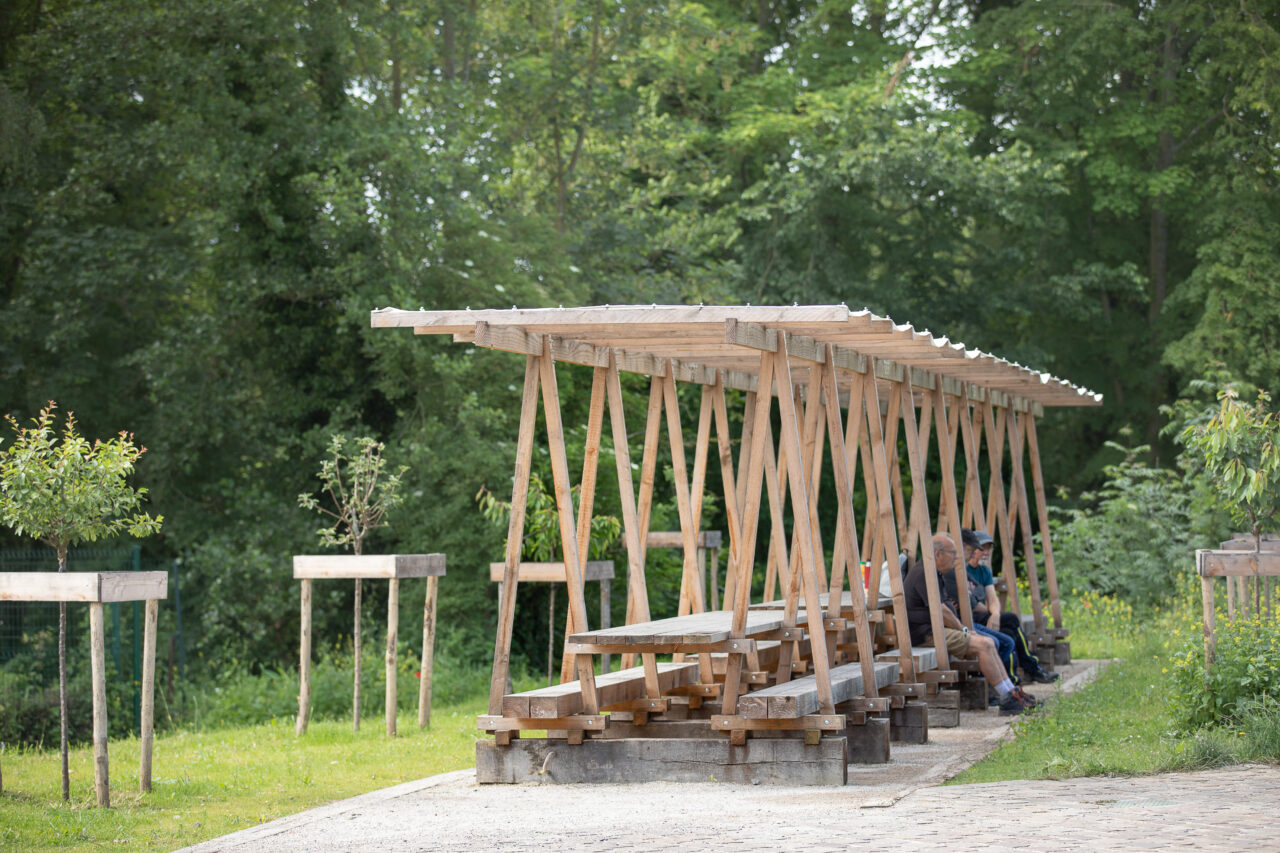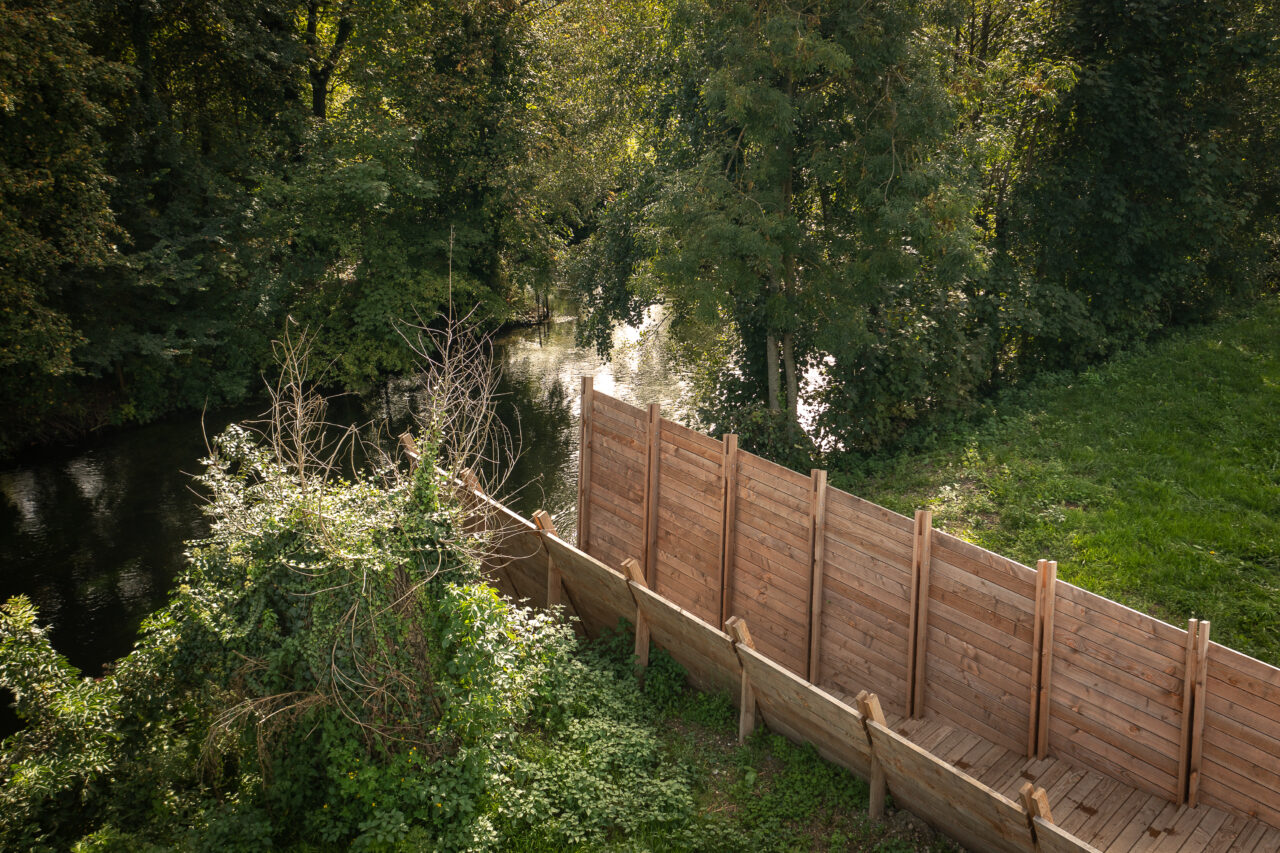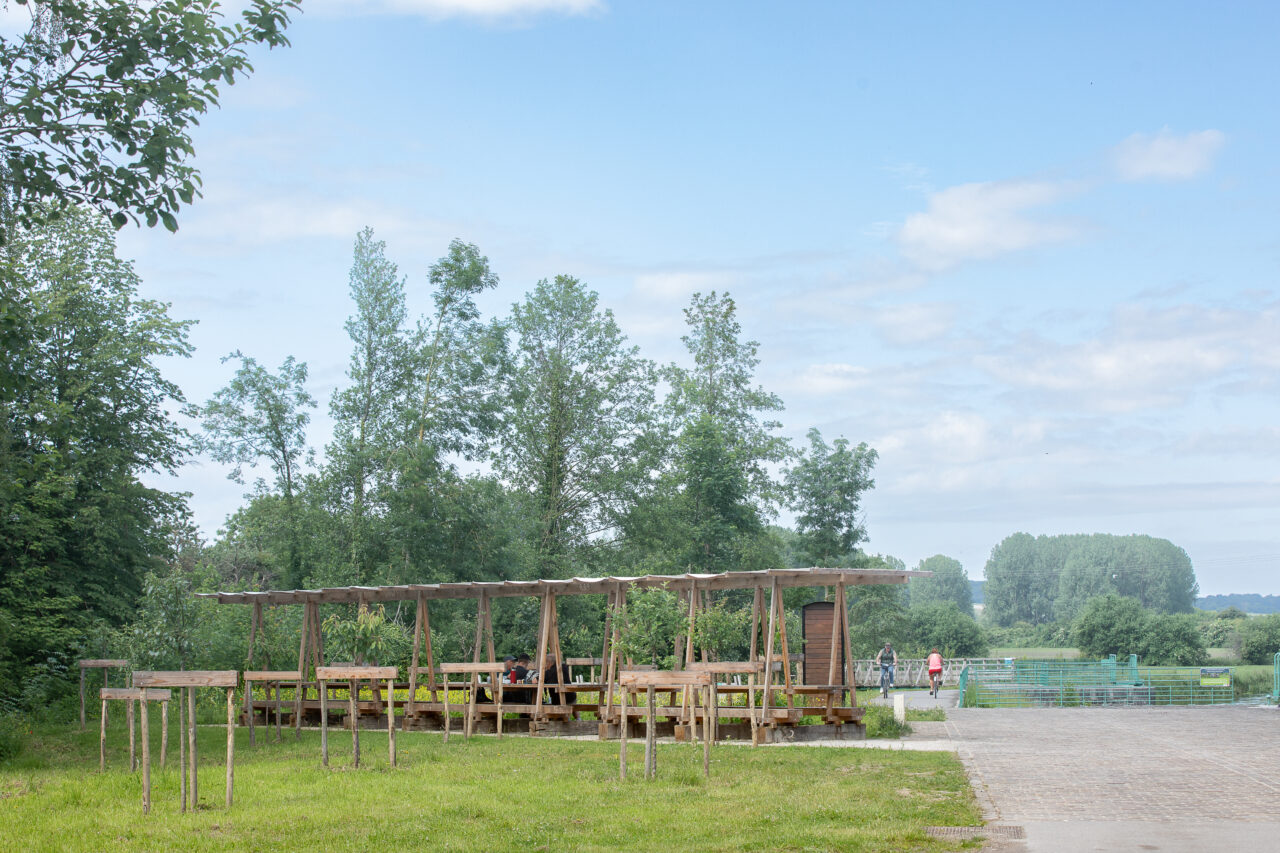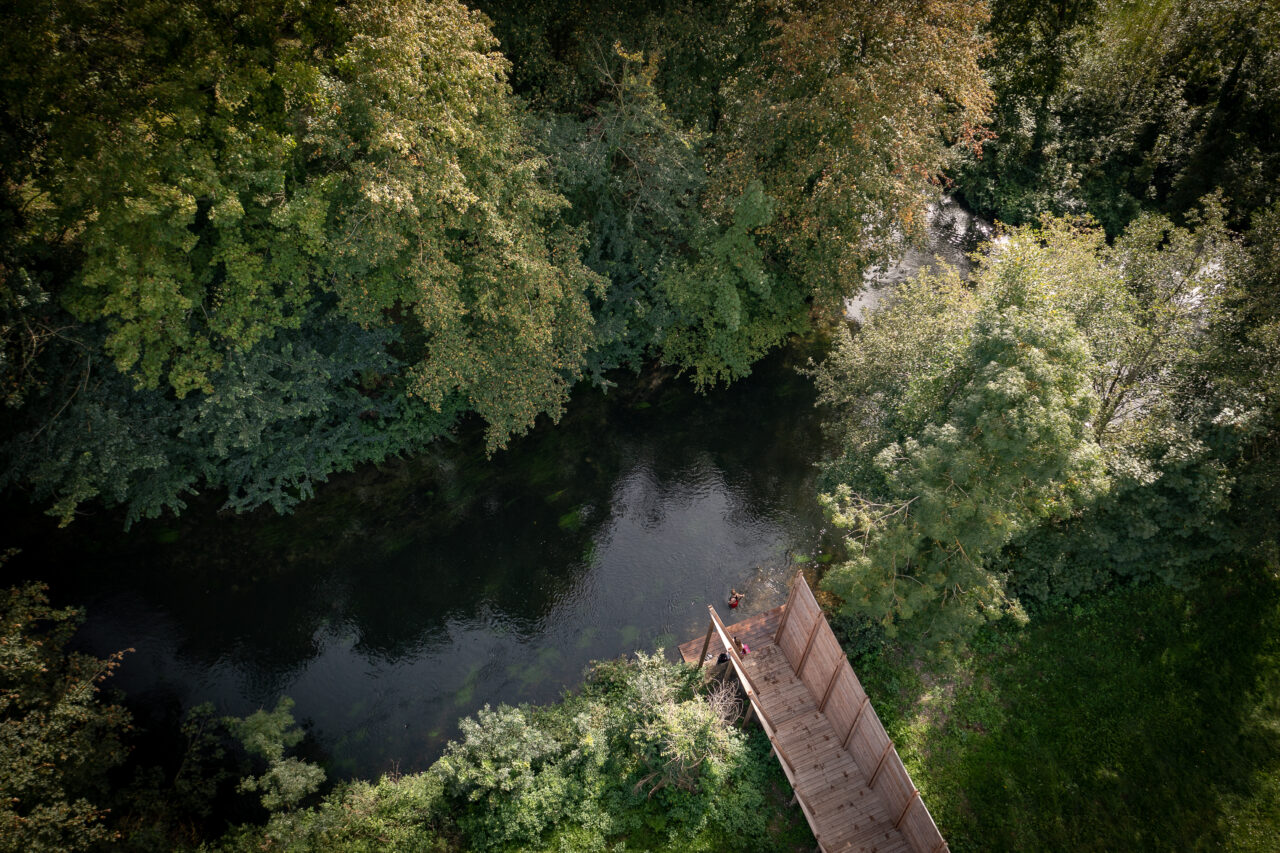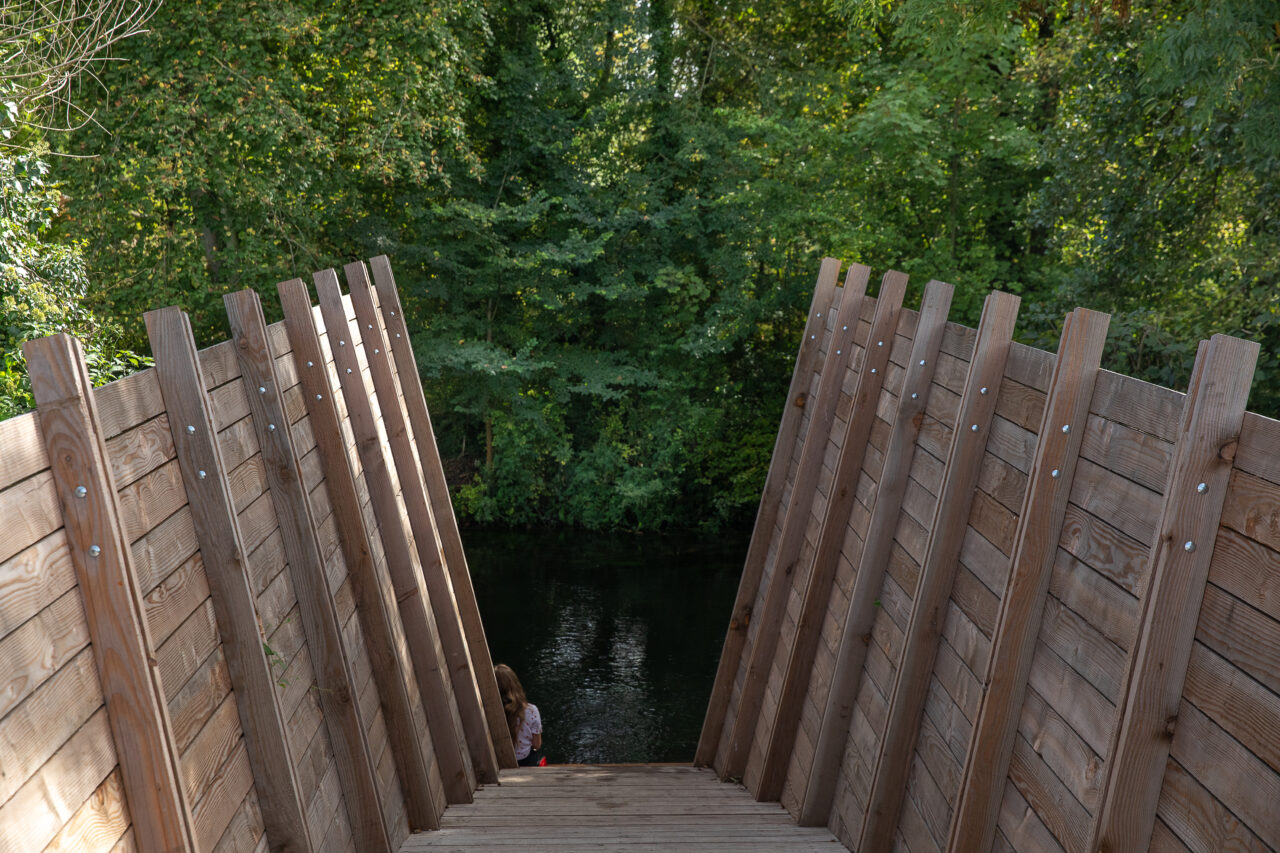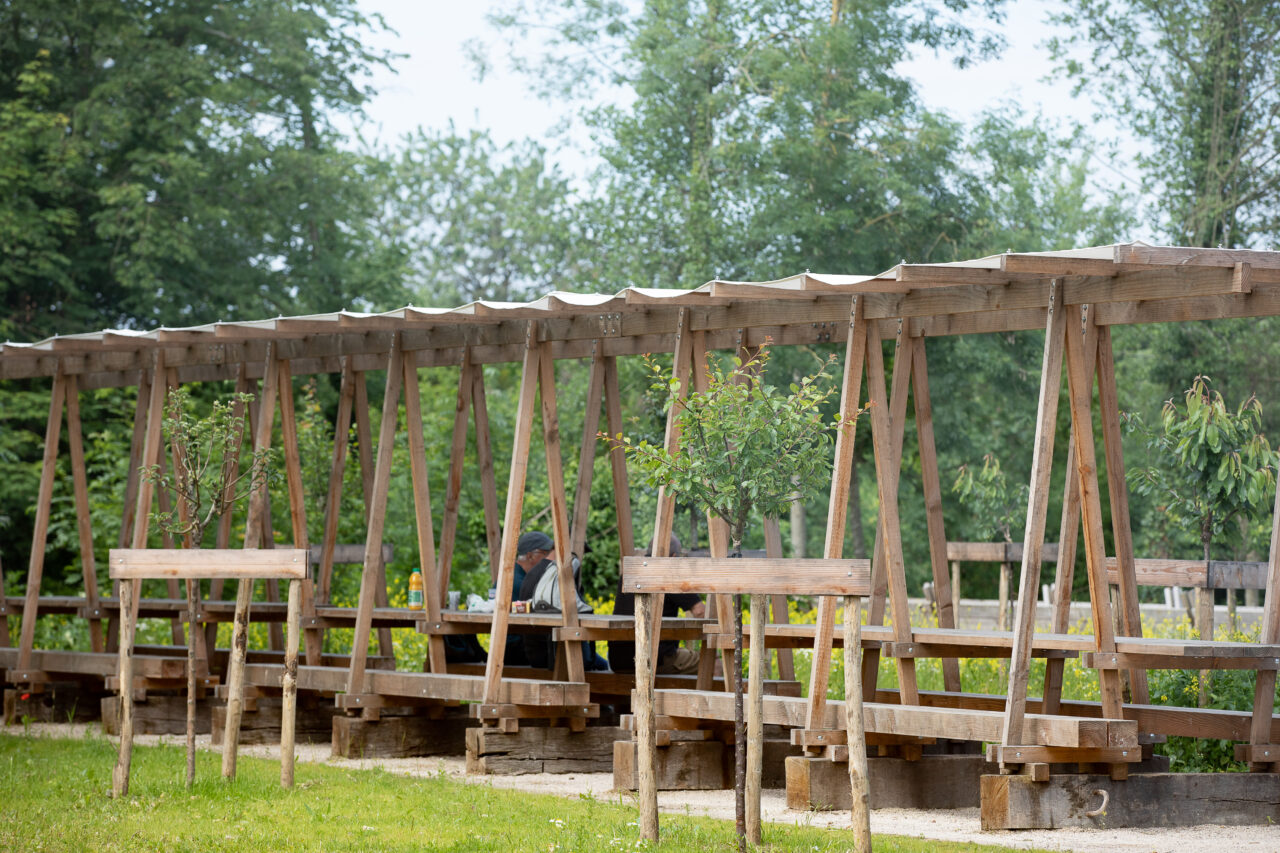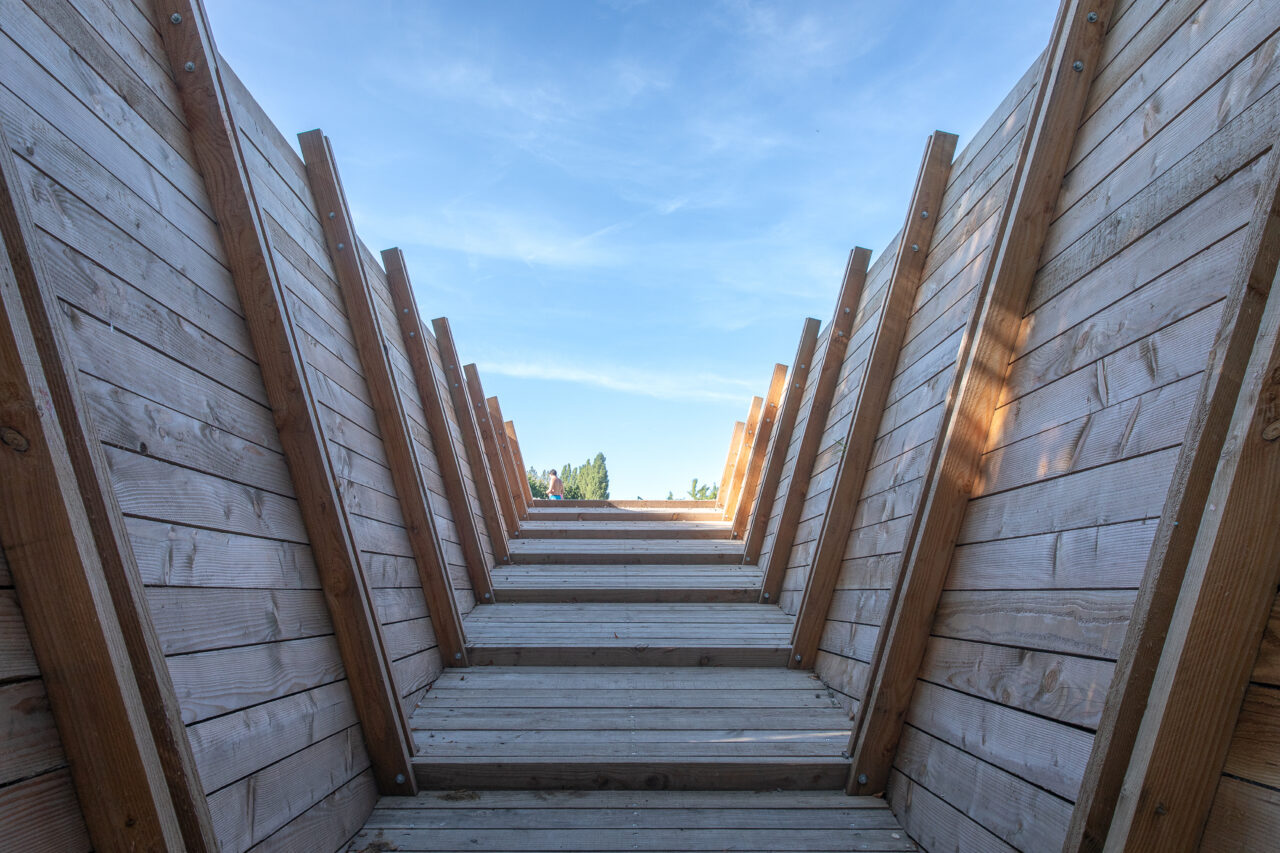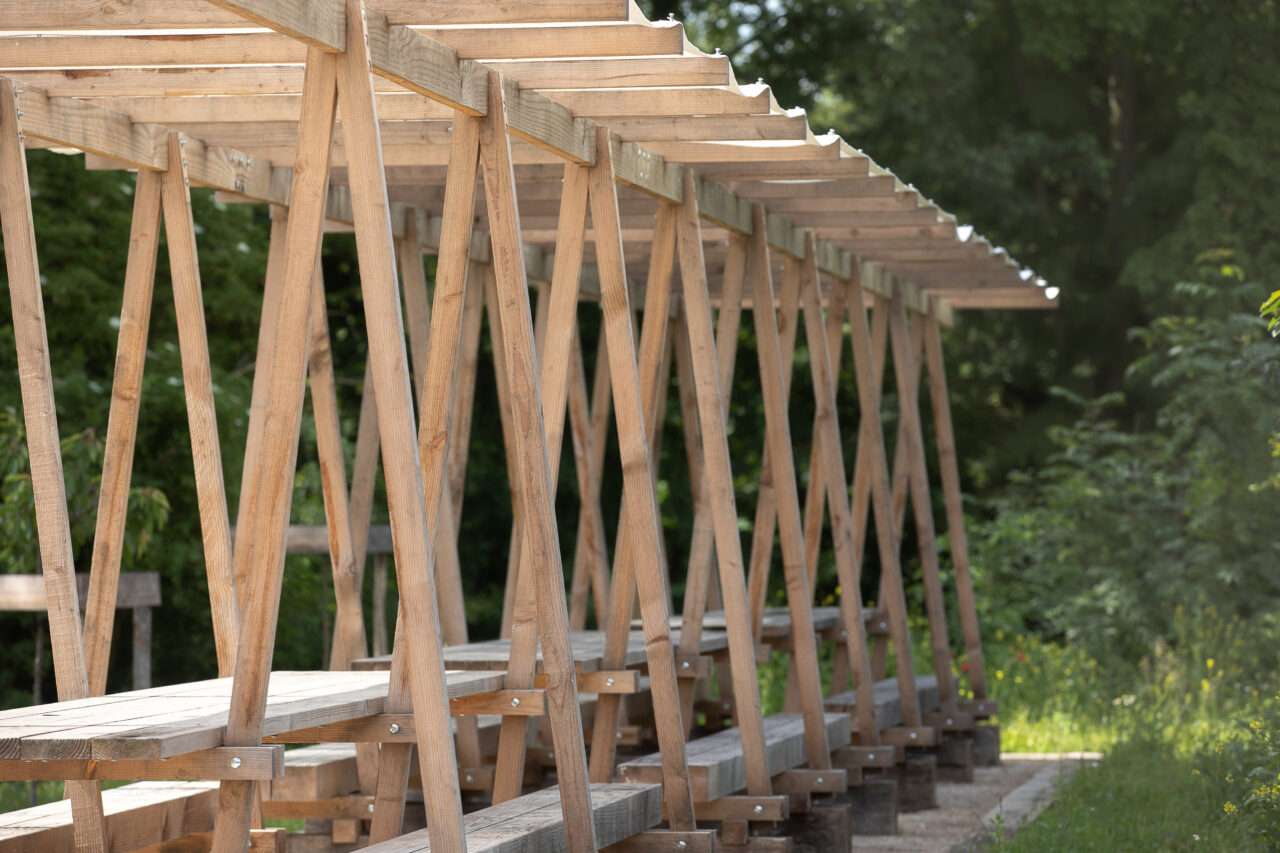Le déversoir > Atelier Quand Même, 2023/2024
L’œuvre est un complexe qui s’articule autour d’un objet s’inscrivant dans la morphologie du site : Le déversoir est une installation qui fait le lien entre le canal de la Somme et le cours voisin de la Vieille Somme.
Cet ouvrage en bois, ancré dans la berge, relie physiquement et visuellement les 2 bras d’une même rivière aux caractères opposés : l’un semble ne pas avoir été contraint dans son parcours sinueux, quand l’autre adopte la rigueur artificielle du canal. À cet endroit, ils se côtoient de près, mais leur l’altimétrie diffère d’environ 2m.
Au-delà de ce jeu topographique, le Déversoir fait aussi le lien avec l’Histoire du site en évoquant la mémoire aujourd’hui largement estompée de l’activité industrielle qu’il a alimenté et qui a fait la richesse de Pont-Remy. La nature architecturale de l’œuvre y fait directement allusion en empruntant à l’esthétique des ouvrages hydrauliques du canal et des biefs de l’ancien quartier des moulins de la commune.
En outre, ce passage en creux franchissable par les promeneurs comme par les porteurs de canoës s’amuse à faire du lien en intégrant — à son échelle — le réseau des voies de communication du canal.
Un geste simple, 3 pans de bois inclinés qui incisent le talus.
La présence de l’ouvrage se veut discrète, elle émerge légèrement pour ne pas complexifier un paysage alentour déjà très hétérogène. Au bord du chemin de halage, parmi les lignes horizontales du canal, les flancs du Déversoir émergent à la hauteur des garde-corps des portes d’écluse. C’est en arrivant à sa hauteur que la faille révèle sa profondeur. L’horizontalité de ses émergences donne la mesure de la pente du sol qui descend en fausse perspective jusqu’à la surface de la rivière.
La forme conique propose un gradient sensoriel, un rapport progressif entre corps et objet. Au fur et à mesure de la descente, les parois se rapprochent et s’élèvent. Une sorte d’écluse piétonne : Avant d’atteindre la rivière, l’espace place le visiteur dans une atmosphère confinée. Le ponton sous-jacent au Déversoir – qui ne se découvre qu’en bas de celui-ci – autorise un contact avec l’eau (plus difficile à rencontrer le long des berges maçonnées du canal). Là, la surface transversale de la rivière se révèle et les berges imposent leur ambiance végétale apaisante.
Dans le sens de la remontée, le regard se porte vers le haut, appelé par la forme qui s’évase et cadre le ciel au-dessus de l’écluse.
Au niveau du plateau éclusier, le Déversoir traverse une bande de prairie enherbée où s’élevait la maison éclusière récemment disparue. La surface accueille désormais un verger qui pourrait être celui du jardin de l’éclusier et qui, avec ses essences locales, rend hommage au jardins vivriers emblématiques des fonds de vallée. En marge des flux du chemin de halage, la trame régulière des houppiers offre une halte ombragée aux passantes et aux passants, ainsi que des fruits à la bonne saison. Une longue tablée se glisse entre deux rangées de troncs, surlignant la perspective et traçant un nouveau lien entre le chemin de halage et berge de la vieille Somme. La charpente de la table répète l’oblique des parois du Déversoir et flotte comme un radeau sur d’épaisses sections de batardeaux issus d’une écluse voisine.
Cette installation composite interroge le statu d’œuvre artistique en ce qu’elle fait — notamment à travers un geste architectural simple, paysager, et un choix de matériaux modestes qui assume la patine du temps — la part belle à l’usage.

